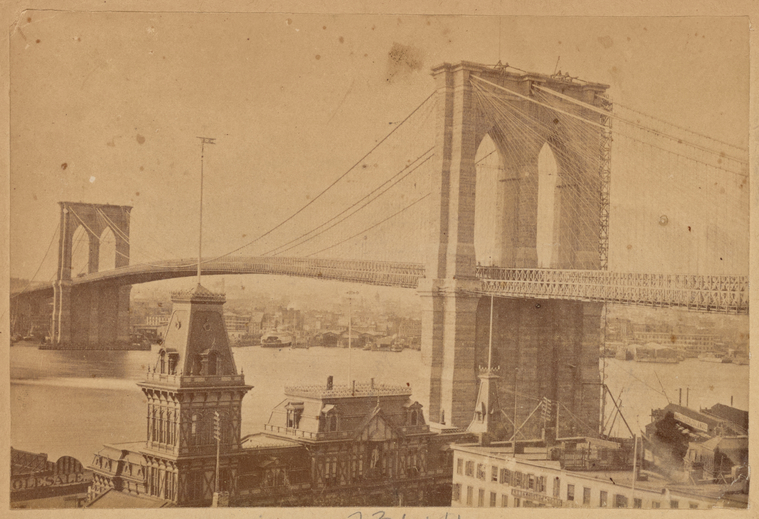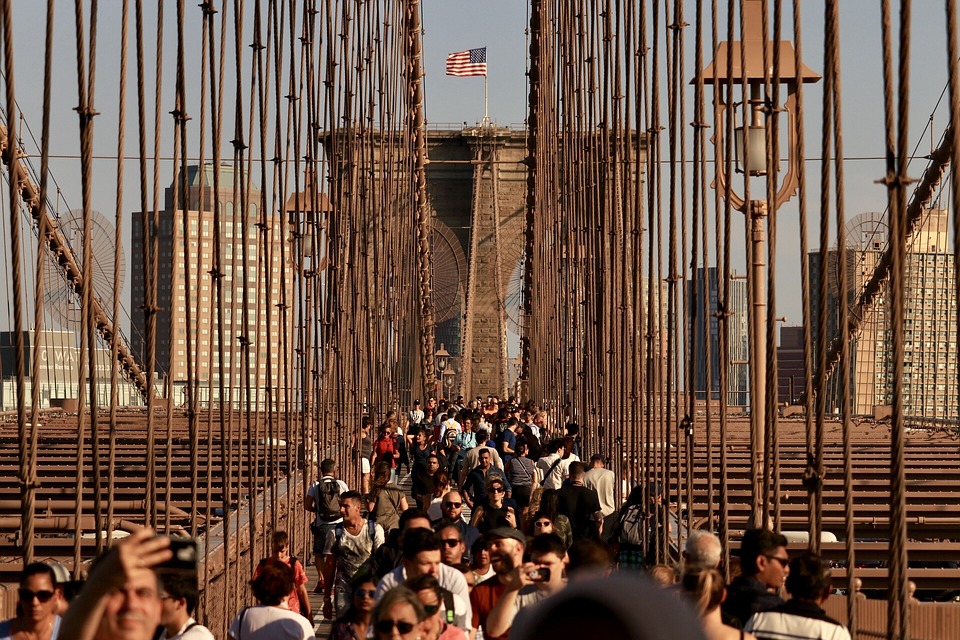John Roebling, a German immigrant, created the original design for the bridge.
Unfortunately, he didn't get to finish his work.
After an injury to his foot and an eventual amputation,
he died from complications due to a tetanus infection.
His son, Washington Roebling was left in charge and with the help of his wife, Emily (considered part of the feminist movement), he continued on the work his father started.
A little over thirteen years after the work began, the bridge was completed.
Estimates suggest the total monetary cost of the bridge came in around $15.5 million. It also cost the lives of 27 people.
Still, the opening celebration was attended by thousands of people;
some walked across that day while others took in the view from the ships located nearby.
1883 The Brooklyn Bridge is completed and is one of the oldest suspension bridges in the United States.
Spanning almost 1600 feet, it connects Manhattan and Brooklyn, in the state of New York.
Residents originally referred to it as the New York and Brooklyn Bridge and even the East River Bridge.
1867 A letter to the editor of a local newspaper called it the Brooklyn Bridge and the name stuck.
Eventually, in 1915, the city government made the name official.
1898 Roadway configured on the bridge to allow trolley and carriages.
1950 The Bridge is closed for construction. Trolley tracks removed and traffic restricted to passenger cars.
There are currently six lanes of vehicular traffic.
1964 The Brooklyn Bridge is designated a National Historic Landmark.
1993 A French daredevil named Thierry Devaux hooked himself up to a bungee cord and successfully jumped off the bridge eight times.
Everything from trolleys to motor cars (and even 21 elephants in 1884) have made their way across the Brooklyn Bridge.
At one point, an elevated train traveled through two of the traffic lanes.
Today, pedestrians and bicyclists often make their way across the bridge via a separate walkway in the center of the bridge.
On either side, there are three lanes available for vehicles that meet certain height and weight requirements.

